So, you’re trying to grow your B2B business with big-ticket deals, but you’re having trouble cultivating the right content that converts the prospects you need.
If you think you need to generate a ton of viral content and act like you’re bigger than you are, you might be surprised to hear that’s not the best course of action. The key to attracting those enterprise customers is in highly specialized content that doesn’t cater to the masses.
In this post, we’ll go through six simple tips to help you realign your marketing approach by developing content that converts large enterprises.
1) Stop Trying to Go Viral
Once upon a time, the goal of any burgeoning content marketer was to craft content that could go viral.
Viral content can make you the talk of the virtual town, putting your brand on the map in a big way. You may have tried this approach yourself, creating flashy infographics or punchy articles with the latest hot take about your vertical, all in the hope of getting noticed.
And it’s true that such posts may garner lots of clicks and even earn mentions on reputable platforms. But don’t forget:
Popularity is not the same as profitability, especially when it comes to high-ticket sales in a narrow market.
For one thing, virality is largely unpredictable. Just as you can’t predict which movies will be blockbusters or which novels will be best sellers, there’s no secret sauce to making your content universally appealing.
But, more importantly, what’s the point of having millions of eyes on your content if none of those people are actually interested in what you have to offer?
A more vital question to ponder is: Are your ideal customers — those capable of buying your product or service — engaged with your content? Or is your content so generalized that it’s not answering the highly concentrated query of enterprise-level decision-makers?
This is where your content wheel might need to pull a 180 and center its focus on the type of people that you’re truly going after. Which leads us to….
2) Know Your Enterprise Customer
If you’re reading this article, it’s highly probable that you’re part of a B2B company that’s aiming to captivate the attention of larger clients and bigger deals.
These corporate titans, with C-suites that dwarf entire small-scale businesses, are on a relentless quest for value. Their Chief Marketing Officers are in pursuit of actionable insights, innovative solutions and forward-thinking strategies that address their intricate, industry-specific challenges.
To not just compete but dominate in this competitive sphere, you must adopt a proactive approach. As a marketer and leader, it’s imperative to conduct thorough research and employ data-driven analytics to discern the pressing issues your eligible prospects are on the lookout for.
So you must craft content that doesn’t just capture attention, but also solves problems, spurs action, provides valuable insights.
It’s not about casting a wide net, it’s about precision targeting.
Content meticulously designed for a distinct niche not only resonates more but often yields the most substantial customer lifetime value (LTV):
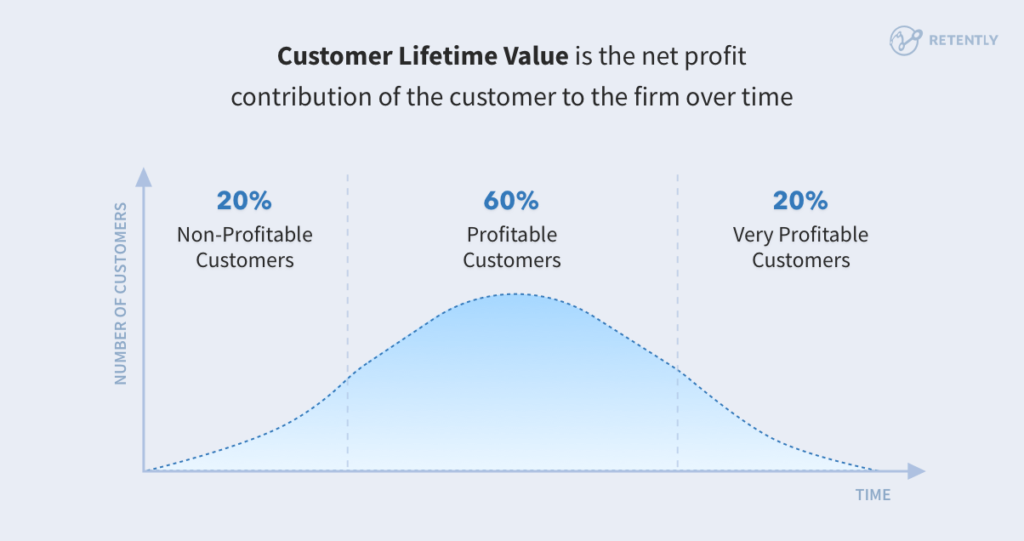
Equip yourself with this knowledge, and you’ll be poised to make impactful strides in the B2B realm.
3) Master Niche Content
You’ve likely heard the adage, “The riches are in the niches.” But don’t misconstrue this; niche doesn’t mean small or insignificant.
Niche means honing in on a specialized segment of the market — those fewer in number but higher in spending power. For example, a meticulously researched and highly specific niche article can pave the way for lucrative contracts and long-term partnerships. It’s because those few focused readers will start to see you as a key player in your vertical with specific answers to their specific questions.
That’s the kind of content that doesn’t just attract attention, it commands it. It has to be solution-oriented content that doesn’t merely muse about a subject superficially. In some cases, your content might be a linkable asset that garners attention from potential customers who find it helpful. That asset can be the doorway toward a bigger relationship with that entity.
Here are a few examples of such assets that can make content that converts:
- Industry White Papers: These are comprehensive reports that address specific issues, trends or challenges in a particular industry. For instance, a white paper on “The Future of Renewable Energy in Southeast Asia” would be invaluable to businesses in that sector.
- Interactive Tools & Calculators: For industries that deal with numbers, such as finance or real estate, an interactive ROI calculator or mortgage estimator can be a game-changer. It offers immediate value to the user and positions your brand as a helpful resource.
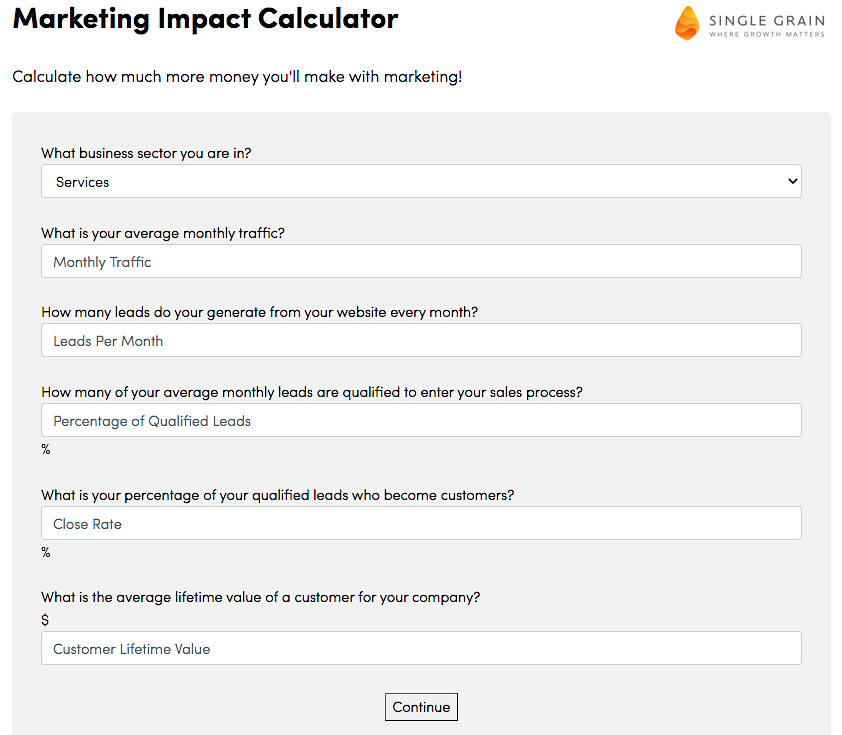
- Webinars and Masterclasses: Offering in-depth training sessions on niche topics can establish your brand as a thought leader. For example, a masterclass on “Advanced AI Algorithms for Healthcare” would attract professionals in the intersection of tech and health.
- E-books and Guides: These are detailed resources on specific topics. An e-book on “Organic Farming Techniques in Arid Regions” would be a treasure for farmers in such areas.
- Infographics: Visual content that breaks down complex data or processes into an easily digestible format. An infographic detailing “The Lifecycle of a Plastic Bottle” would be of interest to environmentalists and businesses in the recycling sector.
- Podcasts and Interview Series: A series where industry experts discuss niche topics can be a goldmine of insights. A podcast focusing on “Innovations in Urban Farming” would cater to a specific audience interested in sustainable city living.
There’s no real formula for this stuff. That’s what makes it niche. It requires that you drill down on an esoteric idiosyncrasy of your industry and be not just another voice commenting on it but the best at it.
By creating such tailored content, you’re not just sharing information, you’re building a bridge, a connection, a potential partnership. It’s these niche assets that often pave the way for deeper, more meaningful business relationships.
4) Combat the FUD Factor
Fear, uncertainty, and doubt (FUD) are powerful emotions that can significantly influence decision-making, especially in the B2B realm.
One common reason high-value prospects might hesitate or even dismiss potential solutions is the perception that a business’s offerings are too narrow or simplistic. While it’s essential for your product or service to be robust and multifaceted, it’s equally crucial for it to be presented as both credible and easily understandable.
Consider the launch of a new SaaS platform. Potential clients might be intrigued but also overwhelmed, unsure of its implications or how it fits into their existing workflows.
For example, when Slack first introduced its team collaboration tool, many businesses were accustomed to traditional email communication. Slack addressed this FUD by offering clear tutorials, case studies and webinars, clearly demonstrating not only the platform’s ease of use but also its transformative potential for team productivity:
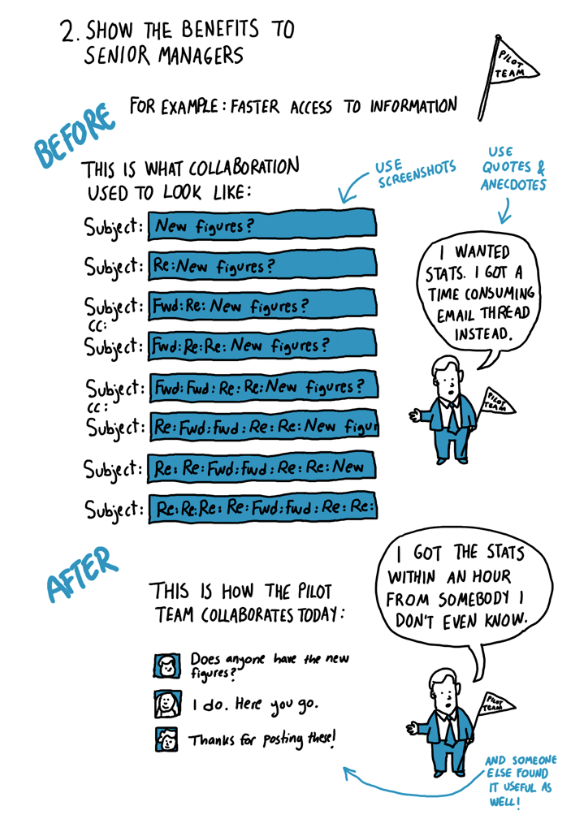
To resonate with your target audience, you must adopt a similar strategy. Showcase your product or service in a manner that’s both accessible and compelling. Emphasize its unique features and benefits, underscoring that it’s not just another off-the-shelf solution but a game-changer in its domain.
By highlighting its distinctiveness and addressing potential concerns head-on, you’ll position your offering as both trustworthy and unparalleled, dispelling any lingering doubts in the minds of potential clients.
5) Leverage MoFu and BoFu Content
Don’t underestimate the power of middle-of-the-funnel (MoFu):
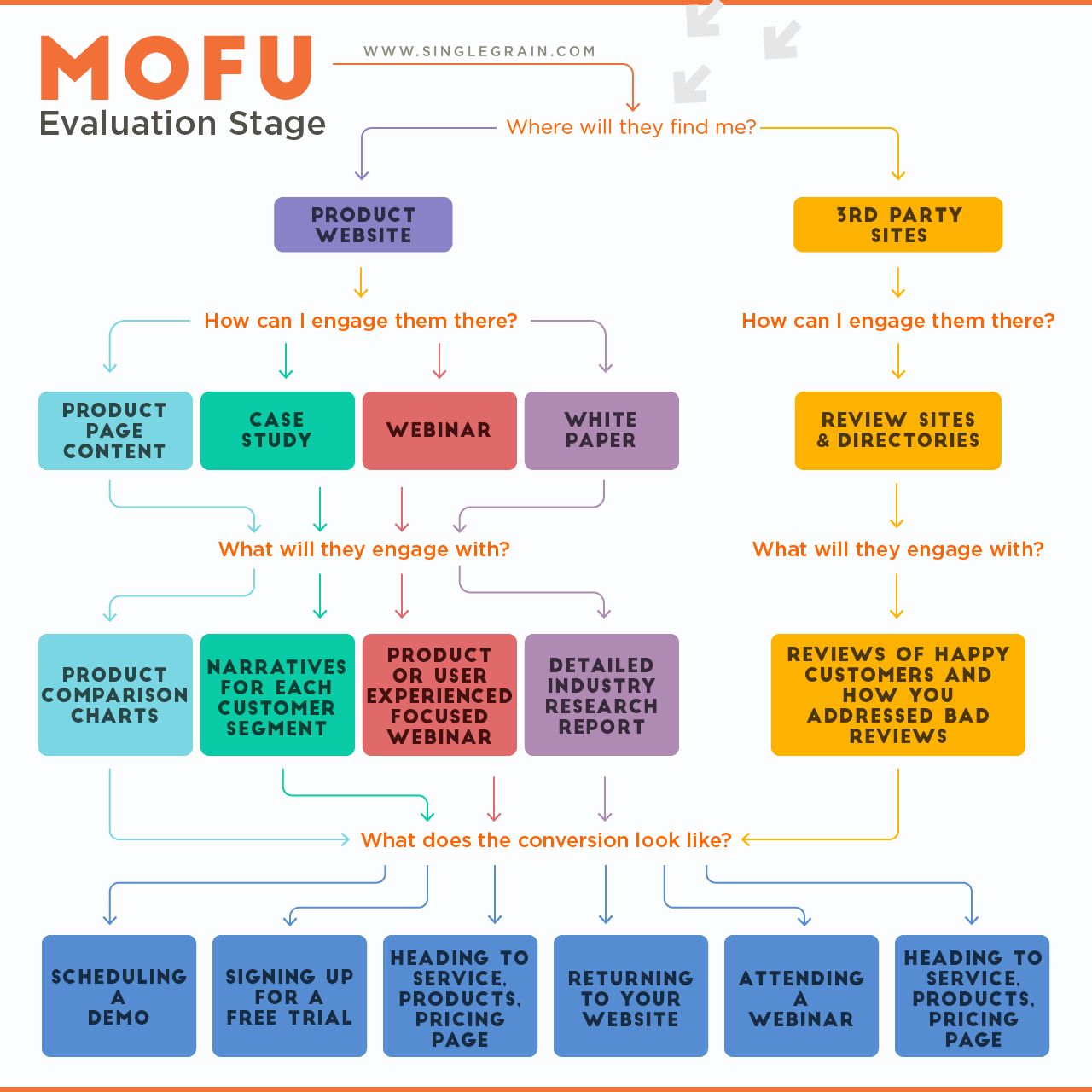
And bottom-of-the-funnel (BoFu) content:
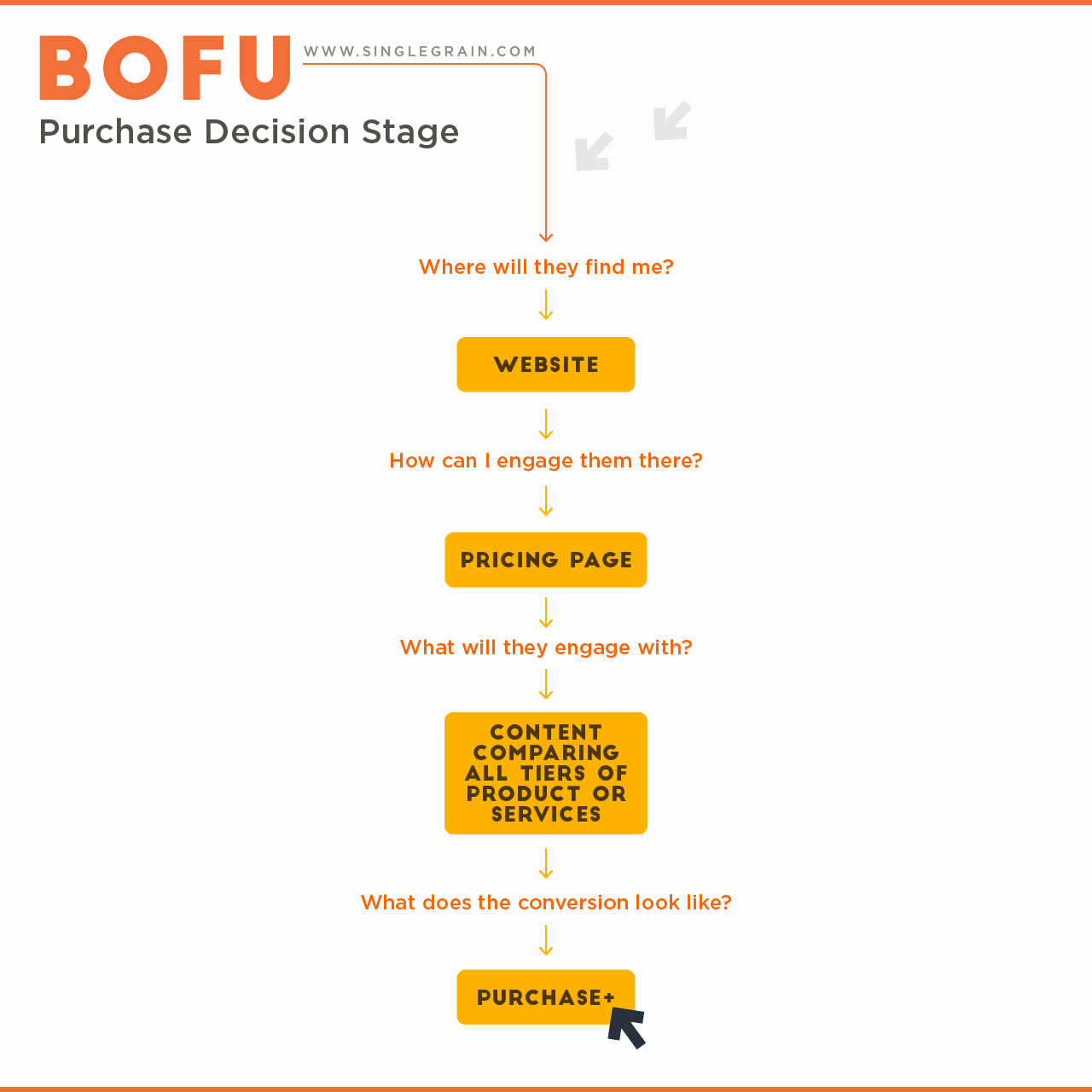
Writing articles that tackle comparisons like “solution A vs. solution B” or “Best Alternatives to XYZ” could resonate more with enterprise-level decision-makers. The objective here is to align your content with the real needs and questions that these companies have.
When they see you’ve put the effort into comparing a wide pool of options for them, they’ll regard you as an entity with voice and authority on topics pertinent to them!
6) Balance Quality vs. Quantity
You might have noticed that focusing on viral, mass-appeal content may bring eyeballs and even clicks, but not necessarily the right kind of engagement or conversion rates.
For instance, imagine launching a marketing campaign that garners a million views, but only a minuscule percentage of those viewers resonate with your brand or product. The numbers might look impressive on paper, but the return on investment remains low.
Conversely, crafting content that’s meticulously tailored to a specific audience might not break the internet with its reach, but it’s designed to resonate deeply with its intended audience. This approach might yield fewer initial clicks, but the engagement is genuine. These are the users who linger on your site, explore your offerings and, ultimately, become loyal patrons.
For example, a niche tech company specializing in cybersecurity solutions for healthcare institutions would benefit more from a detailed white paper addressing specific challenges in medical data protection than from a generic article on “Top 10 Cybersecurity Tips.” The former might attract fewer readers, but they are the decision-makers in healthcare institutions looking for specialized solutions.
In essence, it’s about understanding the difference between mere visibility and valuable engagement. The goal isn’t just to be seen, but to connect, resonate and convert. By striking the right balance between quality and quantity, businesses can ensure that they’re not just reaching an audience, but the right audience.
Summary: Tips for Content that Converts Enterprise Customers
When creating content, it’s very easy to get sidetracked by the glitz and glamour of virality. But if it’s enterprise clients that you’re after, it’s time to switch gears.
If you want content that converts, focus on crafting strategic, niche content that genuinely solves problems for your targeted audience. Stay focused, and build your content strategy around being the final authority that prospects look to for answers.
If you do, you’ll be amazed at the types of deal sizes you can lock down!
If you’re ready to level up your enterprise with content that converts, Single Grain’s enterprise marketing experts can help!👇
For more insights and lessons about marketing, check out our Marketing School podcast on YouTube.



